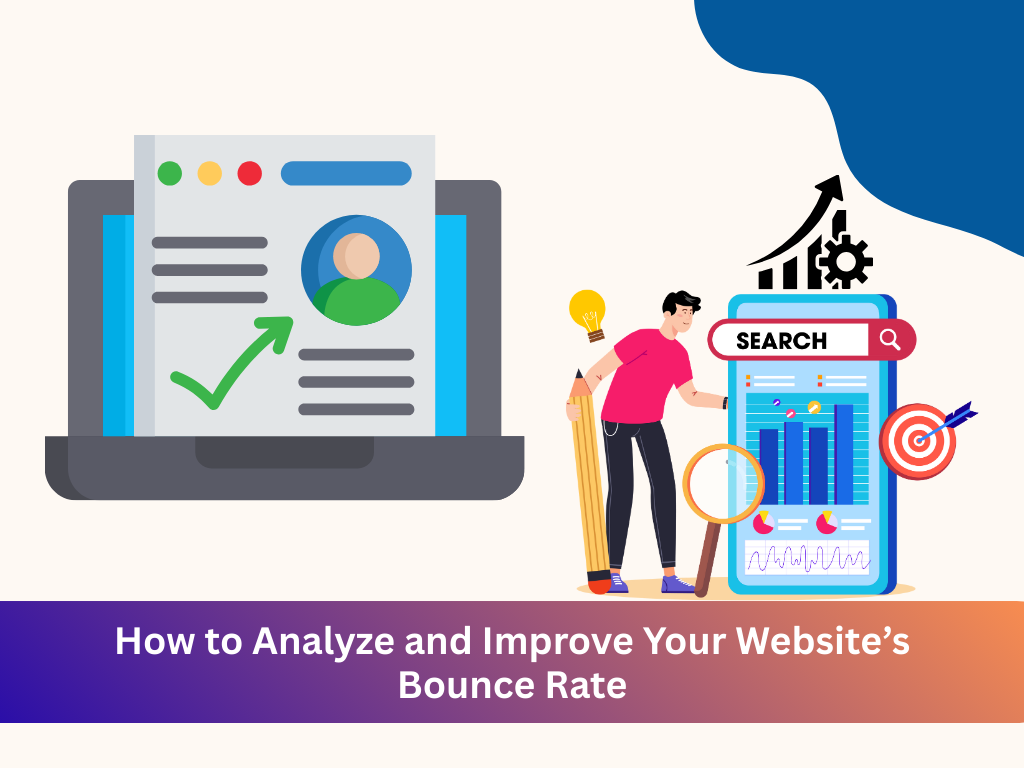
Your website’s bounce rate is more than just a metric—it’s a reflection of how well your site engages visitors. A high bounce rate often signals missed opportunities, poor user experience, or content mismatch. But before you panic, know this: bounce rate isn’t the enemy—it’s a diagnostic tool.
Here’s a comprehensive guide on how to analyze and optimize your bounce rate effectively.
What is the Bounce Rate?
Bounce rate is the percentage of visitors who land on your website and leave without interacting with another page.
Formula:
Bounce Rate = (Single Page Visits / Total Visits) x 100
What’s a Good Bounce Rate?
- 20–40%: Excellent (often for blogs, landing pages with one CTA)
- 41–55%: Average
- 56–70%: Needs attention
- 70%+: Concerning (depends on industry)
Step 1: Analyze Your Current Bounce Rate
Start by logging into your Google Analytics or any analytics tool you’re using.
Look for:
- Pages with highest bounce rates
- Traffic sources (organic, social, paid)
- Device breakdown (desktop vs. mobile)
- New vs. returning visitors
Use Google Analytics 4 (GA4):
- Go to Reports → Engagement → Pages and screens
- Analyze the Engagement Rate and Bounce Rate per page
Step 2: Understand the Cause
Bounce rate alone doesn’t tell the full story. You need to consider:
- Page Load Speed: Slow sites = quick exits
- Content Relevance: Misleading titles = unhappy users
- User Intent: Are you solving their problem quickly?
- Mobile Optimization: Poor mobile UX kills retention
- Call to Action (CTA): Is it clear and visible?
Step 3: Improve Page Experience
Here’s how to keep your visitors longer and engaged:
1. Speed Up Your Site
- Compress images
- Use lazy loading
- Leverage caching
2. Optimize Content for Intent
- Use headers and bullet points
- Make the value clear in the first fold
- Match page copy to ad or search intent
3. Improve Internal Linking
- Suggest related blog posts
- Use prominent CTAs to guide next steps
4. Make It Mobile-Friendly
- Use responsive design
- Keep buttons clickable and text readable
5. Test & Refine Your CTAs
- A/B test button colors, placement, wording
- Place CTAs above and below the fold
Step 4: Personalize & Engage
- Add chatbots or interactive popups
- Use exit-intent popups with offers
- Create dynamic content based on location or behavior
Step 5: Track & Iterate
Improving bounce rate is not a one-time fix. Use tools like:
- Google Analytics
- Hotjar or Crazy Egg (heatmaps)
- A/B Testing Tools (Google Optimize, VWO)
Track performance monthly and test improvements consistently.
Your bounce rate tells you where the disconnect lies. Instead of seeing it as a negative, use it to ask better questions:
- Are visitors getting what they expected?
- Is your value immediately clear?
- Are you guiding them to take the next step?
Tweak, test, and optimize continuously. A lower bounce rate not only improves engagement but also boosts your SEO, conversions, and ROI.
Need help auditing and optimizing your website?
Brandifyy can do a full website performance review and implement conversion-driven design improvements. Let’s talk.
